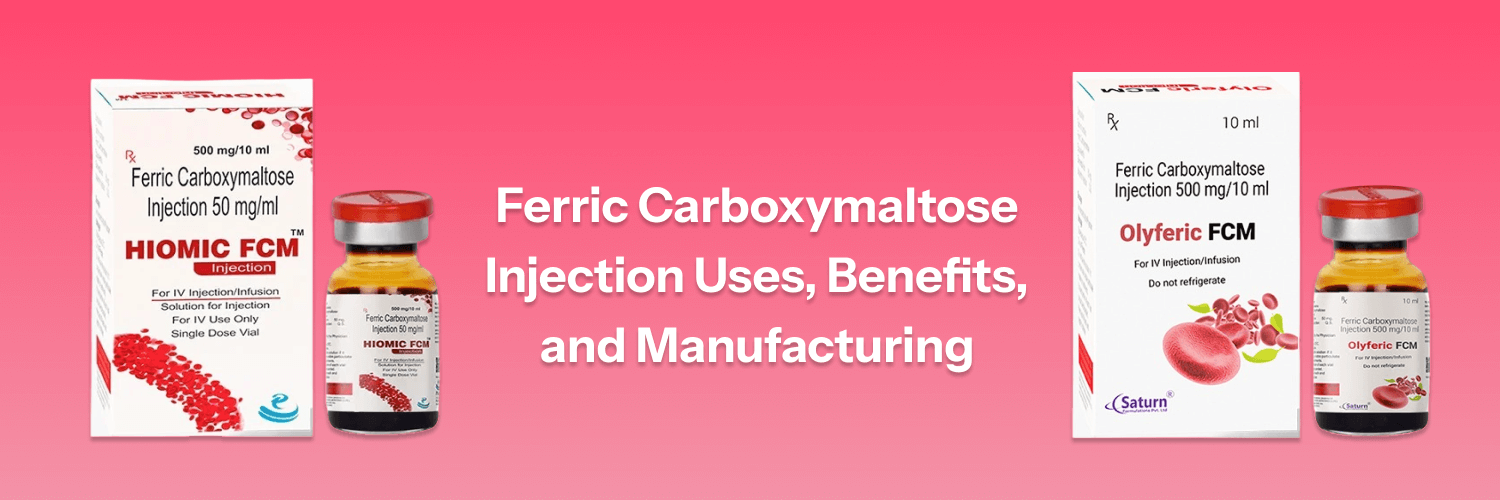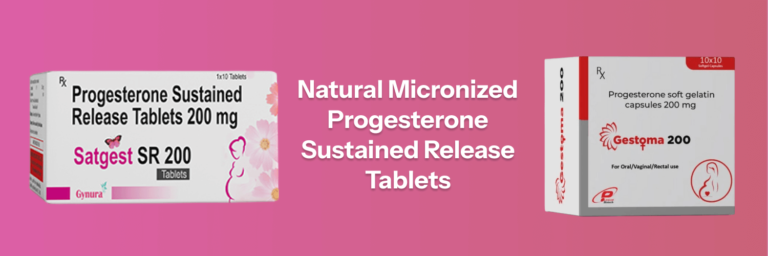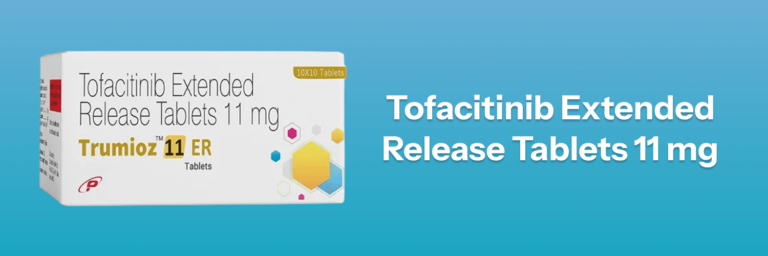Complete Guide to Ferric Carboxymaltose Injection Uses, Benefits, and Manufacturing
Table of Contents
Introduction to Ferric Carboxymaltose
Ferric Carboxymaltose injection has revolutionized the treatment of iron deficiency anemia, offering a highly effective and well-tolerated option for patients requiring iron supplementation. This advanced iron preparation combines ferric iron with a carbohydrate polymer, enabling controlled iron release and optimal utilization by the body. Available in two key formulations – 1000mg/20ML and 50mg/10ML single-dose vials – this injectable iron preparation provides healthcare providers with flexible dosing options to address various patient needs.
Chemical Composition and Properties
Ferric Carboxymaltose is a complex iron compound consisting of a polynuclear iron(III) hydroxide core stabilized by carboxymaltose. Key properties include:
- Molecular Structure: Polynuclear iron(III)-hydroxide complex
- Molecular Weight: Approximately 150,000 daltons
- pH Value: 5.0-7.0
- Osmolarity: 260-270 mOsm/L
- Color: Dark brown solution
- Storage Stability: 36 months at room temperature
These properties contribute to its excellent stability and bioavailability profile, making it an ideal choice for intravenous iron replacement therapy.
Understanding Iron Deficiency Anemia
Iron deficiency anemia represents a significant global health challenge, affecting various patient populations.
Primary Risk Groups
- Pregnant and postpartum women
- Patients with chronic kidney disease
- Individuals with inflammatory bowel disease
- Cancer patients undergoing chemotherapy
- Patients with heavy menstrual bleeding
- Post-bariatric surgery patients
- Elderly individuals with poor nutrition
Clinical Manifestations
- Fatigue and weakness
- Shortness of breath
- Pale skin and mucous membranes
- Reduced exercise tolerance
- Cognitive impairment
- Decreased work productivity
- Increased susceptibility to infections
How Ferric Carboxymaltose Works
The mechanism of action of Ferric Carboxymaltose involves several sophisticated processes:
Iron Release and Transport
- Controlled dissociation of iron from the complex
- Binding to transferrin in plasma
- Transport to bone marrow and other tissues
- Incorporation into hemoglobin and myoglobin
Cellular Uptake
- Endocytosis by reticuloendothelial system cells
- Storage in ferritin form
- Gradual release for erythropoiesis
- Minimal risk of free iron toxicity
Available Dosage Forms and Specifications
Detailed specifications for both available formulations:
1000mg/20ML Single Dose Vial
- Concentration: 50mg/mL
- Total iron content: 1000mg
- Volume: 20mL
- Primary packaging: Type I glass vial
- Secondary packaging: Individual carton with leaflet
- Shelf life: 36 months
50mg/10ML Single Dose Vial
- Concentration: 5mg/mL
- Total iron content: 50mg
- Volume: 10mL
- Primary packaging: Type I glass vial
- Secondary packaging: Individual carton with leaflet
- Shelf life: 36 months
Ferric Carboxymaltose Injection Uses and Indications
Comprehensive list of approved indications:
Primary Indications
Iron deficiency anemia treatment when:
- Oral iron preparations are ineffective
- Rapid iron replenishment is needed
- Oral iron causes intolerable side effects
- Malabsorption disorders are present
Specific Medical Conditions
- Chronic kidney disease with or without dialysis
- Inflammatory bowel disease
- Heavy uterine bleeding
- Post-bariatric surgery
- Pregnancy-related anemia
- Chemotherapy-induced anemia
- Chronic heart failure
Clinical Evidence and Research Studies
Extensive clinical research supports the efficacy of Ferric Carboxymaltose:
Key Clinical Trials
FAIR-HF Study
- Population: 459 patients with chronic heart failure
- Results: Significant improvement in symptoms and quality of life
- Duration: 24 weeks
- Published findings: New England Journal of Medicine
REPAIR-IDA Trial
- Focus: Chronic kidney disease patients
- Outcomes: Superior hemoglobin response
- Safety profile: Comparable to oral iron
- Follow-up period: 12 months
Pregnancy Studies
- Second and third trimester safety
- Rapid hemoglobin improvement
- Reduced need for blood transfusions
- Better maternal outcomes
Administration and Dosage Guidelines
Detailed administration protocols for healthcare providers:
Pre-administration Assessment
- Complete blood count
- Serum ferritin levels
- Transferrin saturation
- Kidney function tests
- Patient weight and hemoglobin levels
Dosing Calculations
Ganzoni Formula Application:
Total iron deficit (mg) = Body weight (kg) × (Target Hb – Actual Hb) × 2.4 + Iron stores
- Additional considerations for specific patient groups
Administration Protocol
- Maximum single dose: 1000mg
- Infusion time: 15-30 minutes
- Dilution requirements: 0.9% sodium chloride
- Monitoring parameters during infusion
Benefits of Ferric Carboxymaltose
Comprehensive analysis of advantages:
Clinical Benefits
Rapid Hemoglobin Response
- Significant improvement within 1-2 weeks
- Sustained response over 12 weeks
- Reduced need for repeat dosing
Safety Profile
- Low allergic reaction risk
- Minimal gastrointestinal effects
- Better cardiovascular safety
Economic Benefits
- Reduced hospital visits
- Lower administration costs
- Improved workplace productivity
- Decreased healthcare utilization
Comparison with Other Iron Preparations
Detailed comparison with alternative treatments:
Versus Oral Iron
- Faster absorption rate
- Better gastrointestinal tolerance
- Higher patient compliance
- More predictable response
Versus Other IV Iron Preparations
Iron Sucrose
- Fewer required doses
- Shorter infusion time
- Better cost-effectiveness
Iron Dextran
- Lower allergic reaction risk
- No test dose required
- Faster administration
Storage and Handling Requirements
Essential storage and handling guidelines:
Storage Conditions
- Temperature: 20-25°C (68-77°F)
- Light protection requirements
- Humidity considerations
- Shelf-life monitoring
Handling Protocols
Pre-administration
- Visual inspection
- Dilution guidelines
- Compatibility checks
- Equipment requirements
During Administration
- Line flushing protocols
- Monitoring requirements
- Emergency preparedness
Potential Side Effects and Precautions
While generally well-tolerated, healthcare providers should be aware of:
Common Side Effects
- Injection site reactions
- Temporary taste disturbances
- Mild headache
- Nausea
Precautions
- Hypersensitivity monitoring
- Proper storage requirements
- Administration technique importance
Manufacturing Process and Quality Control
Detailed manufacturing specifications:
Production Process
Raw Material Testing
- Iron salt quality
- Carboxymaltose purity
- Excipient specifications
Manufacturing Steps
- Complex formation
- pH adjustment
- Sterile filtration
- Aseptic filling
Quality Control
- In-process testing
- Finished product analysis
- Stability studies
- Batch release criteria
Top Manufacturers and Suppliers
Several reputable pharmaceutical companies manufacture and supply Ferric Carboxymaltose injection:
Saturn Formulations
- Known for consistent quality
- WHO-GMP certified facilities
- Extensive distribution network
Plenum Biotech
- Competitive pricing
- Multiple strength options
- Strong quality control measures
Cipla
- International presence
- Research-backed formulations
- Reliable supply chain
[Note: There is lot more companies as well Please read out our another blog for more companies – Click here]
Market Analysis and Industry Trends
Current market insights:
Global Market Overview
- Market size and growth projections
- Regional demand patterns
- Key market drivers
- Future growth opportunities
Industry Trends
Technology Advancements
- New formulation developments
- Improved manufacturing processes
- Enhanced delivery systems
Market Dynamics
- Growing prevalence of anemia
- Increasing healthcare expenditure
- Rising awareness about iron deficiency
Distribution and Supply Chain
Comprehensive supply chain information:
Distribution Network
- Hospital supply channels
- Wholesale distribution
- Direct supply options
- Cold chain requirements
Quality Assurance
- Transport validation
- Temperature monitoring
- Documentation requirements
- Good Distribution Practice (GDP) compliance
FAQs About Ferric Carboxymaltose
Q: How quickly does Ferric Carboxymaltose Injection work?
A: Most patients show significant improvement in hemoglobin levels within 2-3 weeks of administration.
Q: Is it safe during pregnancy?
A: Yes, it’s considered safe during pregnancy, particularly in the second and third trimesters.
Q: How is it different from oral iron supplements?
A: It provides faster iron replenishment and better absorption compared to oral supplements, with fewer gastrointestinal side effects.
Conclusion
Ferric Carboxymaltose injection represents a valuable tool in treating iron deficiency anemia. Its availability in multiple dosage forms, combined with its efficacy and safety profile, makes it a preferred choice for healthcare providers worldwide. For bulk requirements or distribution inquiries, connecting with reputable manufacturers ensures access to quality products and reliable supply chains.
Brand Name – Hiomic FCM , Olyferic FCM
Product Links – Hiomic FCM , Olyferic FCM
Contact Information
Name – Top Pharma Companies
Email – info@toppharmacompanies.com
Phone : +91-8729000609





